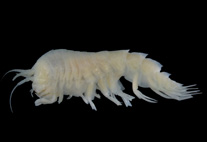Abstract
A large collection of shallow-water hydroids from various Chilean provinces, ranging from Taltal (25° S) in the North, to the Strait of Magellan (53° S) in the South, was studied, and a total of 30 species are discussed in the present report. Of these, eleven are new to science: Candelabrum valdiviensis, Halecium erratum, H. humeriformis, H. maximum, H. modestum, H. platythecum, Hydrodendron chilense, Sertularella asymmetra, S. curta, S. pauciramosa, and Symplectoscyphus semper. The nominal species Halecium flexile Allman, 1888, included for many decades in the synonymy of H. delicatulum Coughtrey, 1876, is resurrected based on distinctive features displayed by its newly discovered female gonothecae. A thorough discussion is provided on several morphologically related species of the genus from various localities around the world, and data on the nematocyst complement are emphasized, allowing the distinction of an as yet undescribed species, H. tristaniensis, from Tristan da Cunha, South Atlantic, and the resurrection of H. balei Fraser, 1911 from southern Australia. Halecium tehuelchum (d’Orbigny, 1842), a poorly known species considered as of doubtful validity, is redescribed based on fertile material of both sexes. A discussion on the taxonomy of several members of the genus Hydrodendron Hincks, 1874, including the first comprehensive account of their cnidome, is provided. The male and female gonothecae of Halopteris plumosa Galea & Schories, 2012 are described for the first time. A discussion on the genus Silicularia Meyen, 1834 is provided, and three subantarctic species are provisionally recognized based on the material in hand, viz. S. bilabiata (Coughtrey, 1875), S. rosea Meyen, 1834, and S. hemisphaerica (Allman, 1888). Four hydroids are new records for Chile: Halecium corrugatissimum Trebilcock, 1928, Parascyphus simplex (Lamouroux, 1816), Symplectoscyphus unilateralis (Lamouroux, 1824), and Aglaophenia divaricata Busk, 1852, the last two being accompanied by comments on their synonymy. Two additional hydroids are only tentatively identified, viz. Hebella cf. scandens (Bale, 1888) and the allusive benthic stage of Phialella falklandica (Browne, 1902).

